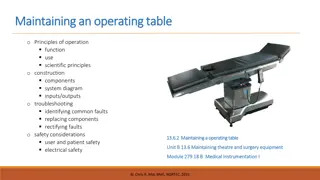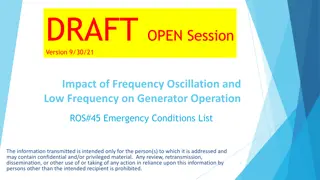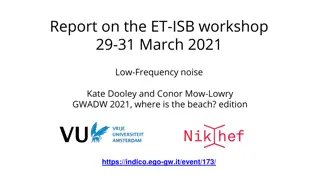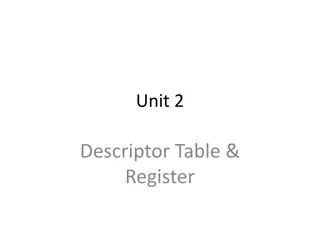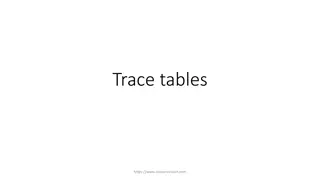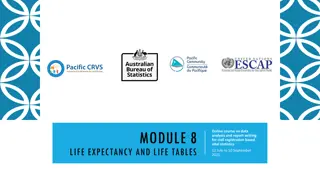
Analyzing Frequency Tables for Data Insights
Explore the principles and rules behind frequency tables for data analysis, including examples of low counts and cell suppression. Understand the importance of providing counts in frequency outputs and the assessments for safe analyst training in this module. Discover how frequency tables can offer valuable insights into various datasets.
Download Presentation

Please find below an Image/Link to download the presentation.
The content on the website is provided AS IS for your information and personal use only. It may not be sold, licensed, or shared on other websites without obtaining consent from the author. If you encounter any issues during the download, it is possible that the publisher has removed the file from their server.
You are allowed to download the files provided on this website for personal or commercial use, subject to the condition that they are used lawfully. All files are the property of their respective owners.
The content on the website is provided AS IS for your information and personal use only. It may not be sold, licensed, or shared on other websites without obtaining consent from the author.
E N D
Presentation Transcript
Frequency tables Rules-based Minimum cell count All counts should be unweighted Principles-based Threshold is a rule-of-thumb The units and data being presented should be considered Frequencies can be presented in many different ways including tables, histograms, pie charts, bar charts. The guidance for frequency tables will also apply for these.
Low Counts Marital and HIV status of 16 year old men in London example data Marital Status Diagnosed with HIV? Table is understandable Yes No Single 2,783 45,144 Married 14 762 Divorced 10 396 Low number of observations Widowed 1 0
Low Counts Marital and HIV status of 16 year old men in London example data Marital Status Diagnosed with HIV? Yes No Single 2,783 45,144 Married 14 762 Divorced or Widowed 11 396
Cell Suppression Statistics supplied courtesy of Public Health England Practice name Socio-economic deprivation quintile New cancer cases Females aged 50-70 screened for breast cancer within 6 months of invitation Two-week referrals with suspected lung cancer Understandable column names Dr A M Doyle s Practice 5 REDACTED 830 12 Has suppression been successful? Dr M J Wilson s Practice 4 REDACTED 14 13 The Crescent Surgery 3 74 16 REDACTED Waterloo Medical Centre 5 57 10 12 NHS Blackpool CCG 253 870 38
Providing Counts When producing outputs based on frequencies, it is necessary to also include the counts. This enables the output checker to check if the threshold has been met.
Assessments for this module SDAP: Safe Analyst Training Frequency Tables Created by Cancer Research UK, DKFZ, and The Health Foundation for the Safe Data Access Professionals Working Group





